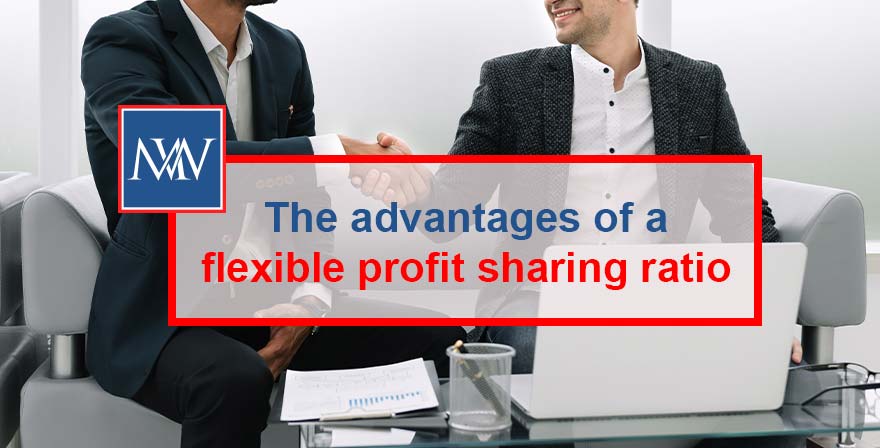
The advantages of a flexible profit sharing ratio
In a partnership, profits and losses are shared between the partners in accordance with the profit sharing ratio. This may be fixed, for example, three partners may agree to share profits in the ratio of 40:35:2; but it does not have to be. Instead, the partners can simply agree to share profits and losses in such proportions as is agreed between them.
A fixed profit sharing ratio has the advantage of certainty as each partner knows at the outset what their share of the profits will be. It also enables the partners to agree up front on an allocation with which they are happy, and which is transparent. However, this may not be the best option from a tax perspective. By contrast, a flexible profit sharing ratio whereby partners agree on the profit allocation each year according to their personal circumstances will allow them to minimise their combined tax bill. While this is unlikely to be acceptable where the partners only have a professional relationship with each other, where there is a personal relationship, for example, if the partners are married or in a civil partnership, a flexible profit sharing ratio can be advantageous from a tax perspective.
Example
Anne and Bill are married and in partnership. They agree to share profits and losses in such proportion as is agreed between them.
In 2021/22, Anne also has a job from which she earns £35,270. Bill’s only income is from the partnership.
The partnership makes a profit of £70,000. Taking account of their personal circumstances, they agree to share the profits in the ratio 2:5, so that Anne receives profits of £20,000 and Bill receives profits of £50,000.
Anne pays tax of £4,000 on her profits (£20,000 @ 20%).
Bill pays tax of £7,846 (20% (£50,000 – £12,570)).
Their combined tax bill is £11,846. If they had shared profits equally, the combined tax bill would have been £14,846 as £15,000 of the profits would have been taxed at 40% rather than 20%.
Anne retired from her job on 1 April 2022. In 2022/23 her only income is from the partnership. However, Bill undertakes a consultancy role from which he earns £40,000. The profits from the partnership are £60,000 for 2022/23. As their circumstances are different this year, it is better from a tax perspective to share profits in the ratio of 5:1, so that Anne receives profits of £50,000 on which she pays tax of £7,846 and Bill receives profits of £10,000 on which he pays tax of £2,000 – a combined tax bill of £9,846.
Had they continued to share profits in the ratio 2:5, Anne would have received profits of £17,143 on which she would have paid tax of £914.60 and Bill would have received profits of £42,857 on which he would have paid tax of £14,168.80, and their combined tax bill would have been £15,083.40. By adopting a flexible profit sharing ratio, they can reduce their combined tax bill by over £5,000.
Need Accountancy Support?
For information on bespoke training, or if you have any other questions for Makesworth Accountant, please fill in your details below
















 151
151